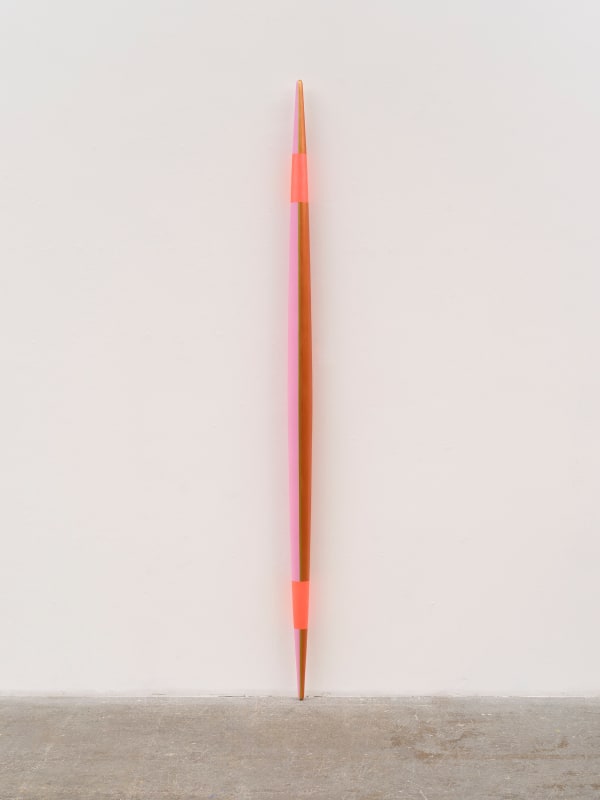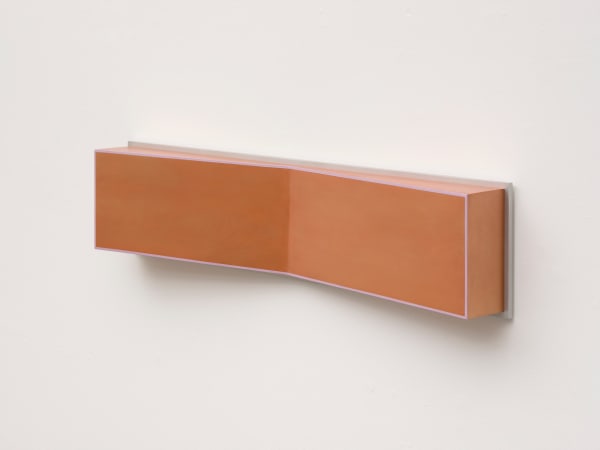
Building on her investigation of visual perception, Barth's series Deep Blue Day explores notions of the atmospheric and ephemeral through light as it shifts over time. Here, Barth overtly manipulates her surroundings by drawing the folds of her living room curtains in order to shape shifting rays of sunlight over the course of an afternoon. While photography is always about light and exposure, this work is a beautiful example of Barth's engagement with light, where she uses it in an almost sculptural or performative way.


Over the past decade, Math Bass has developed a lexicon of symbols—letters, bodily forms, architectural fragments, animals, bones—arranged in a variety of scores, each symbol an empty space of meaning, filled in by the context in which it finds itself. Repetition of these symbols, rather than codifying them into one solid signification, exposes the difference at the heart of each iteration; there is always a gap in meaning, something unnamable left out of and left over in the viewer’s reading—a jouissance. It is this gap in the symbolic where Lee Edelman states queerness lies—not as an easily categorized liberal identity but as a process of unmaking and undoing that leaves (gendered) subjectivity as we know it in question. That these symbols are familiar only heightens our unsettling; the negative space of these compositions, a major player in Bass’s practice, adds further to the gap.



Sandra Cinto’s fine brush draws intricate mountains, waves, clouds and stars onto blue and gold ground. These delicate motifs appear across her works, populating her lyrical worlds. Cinto’s seemingly weightless environments hover gently between fantasy and reality, creating a luminous plane where anything is possible. Her new series of circular paintings suggest Renaissance ‘tondos’, a form favored for images of the Madonna or the filigreed halos of Byzantine icons. Rather than looking to the saints for salvation, Cinto’s tondos look to the miracle of the natural world for enlightenment.


Packed tightly on a steel support, a cluster of glass spheres of various sizes resembles organic phenomena like water droplets or a clutch of eggs. Seen from the front, the curved interiors of the spheres reflect the observer upside down and inverted. Since only the back third of each sphere has been treated with a reflective coating, the spheres appear clear when viewed from the side. As viewers walk around the work, they experience themselves in a visually unfamiliar way, echoed by the multiple, inverted reflections. Your small altruistic assembly emerged from Eliasson’s long exploration of optical devices, mirrors, and lenses. By magnifying the viewers’ every movement, the multiple, inverted reflections conjure new ways of seeing and invite viewers to retrace and examine their perceptual orientation.
Olafur Eliasson’s solo exhibition OPEN is on view at the Museum of Contemporary Art, Los Angeles, until July 6, 2025.



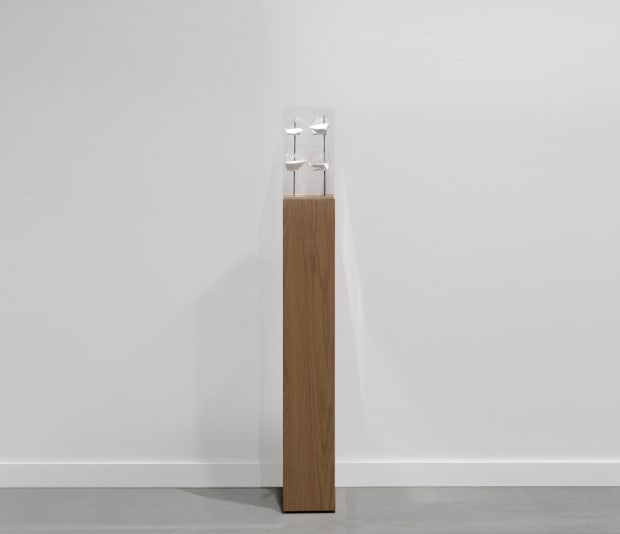
Shilpa Gupta’s hourglasses are irregular, dented as though crumpled in an invisible fist. Turned on their sides, the sand is frozen in unequal halves. Within the glass vitrine, these arrested moments are displayed like artifacts, highlighting the way time can be controlled and regimented. Gupta makes time visible, not through scientific measurements, but through the embodiment of its unruly nature — a second can feel like an hour, a day can feel like a minute — hinging on memory and emotion.
Shilpa Gupta's solo exhibition Some suns fell off is on view at our LA Gallery, from February 15 -- March 29, 2025.






In this series, Lisa Oppenheim explores the legacy of Edward Steichen (1879-1973), well-known for his photographic innovations and experimental approaches to flower-breeding. In 1910, botanist Fernand Denis created and named an iris hybrid "Mons. Steichen" after him, though no images or specimens survive.
Steichen pioneered dye transfer printing in the 1930s, experimenting with unconventional color combinations to create vibrant, almost psychedelic images. In his spirit, Oppenheim used AI to generate hypothetical crosses between the parent iris species (Chameiris Alba and Iberica). She then produced analog prints of the AI-generated images using the labor-intensive and almost entirely outmoded dye transfer process. Using non-standard colors, she created diverse interpretations of the lost "Mons. Steichen" hybrid that explore the concept of both genetic and photographic verisimilitude.
Lisa Oppenheim’s solo exhibition Monsieur Steichen, is on view at the Mudam Museum of Modern Art, Luxembourg, until August 24, 2025.
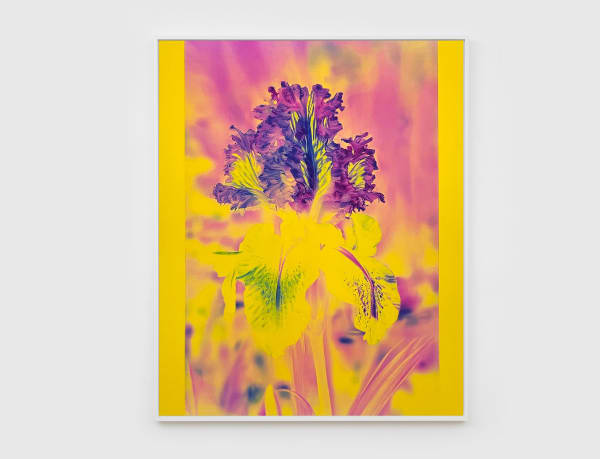

Dana Powell's small-scale oil paintings depict moments of transition and anticipation. They take the shape of night drives, full moons, swimming pools, elevator doors, still lifes with fruit, explosions, and peep holes. Unrelated at first look, these subjects prove malleable apparatus in demonstrating the unsettling power of the ordinary, and emotive potential of small shifts in formal painting strategies. Considered austerity is applied to Powell’s tableaus of the everyday, offering a window to the familiar and its undertow.


Analia Saban dissects and reconfigures traditional notions of painting, often using the medium of paint as the subject itself. Blurring the lines between painting and sculpture, imagery and objecthood, her work frequently includes plays on art historical references and traditions. This body of work sees Saban continue her investigations into the relationship between paint, pigment and canvas. Starting with her research into the history of pigments and the composition of paint that she conducted during a residency at the Getty Conservation Institute in 2016, Saban has found it interesting to change the relationship between paint and canvas. In this work, the paint is woven through the linen.
Analia Saban’s work is on view at the National Gallery of Canada, Ottawa, until March 2, 2025. The exhibition, Woven Histories: Textiles and Modern Abstraction, will travel to the Museum of Modern Art, New York (on view April 20 — September, 13, 2025).
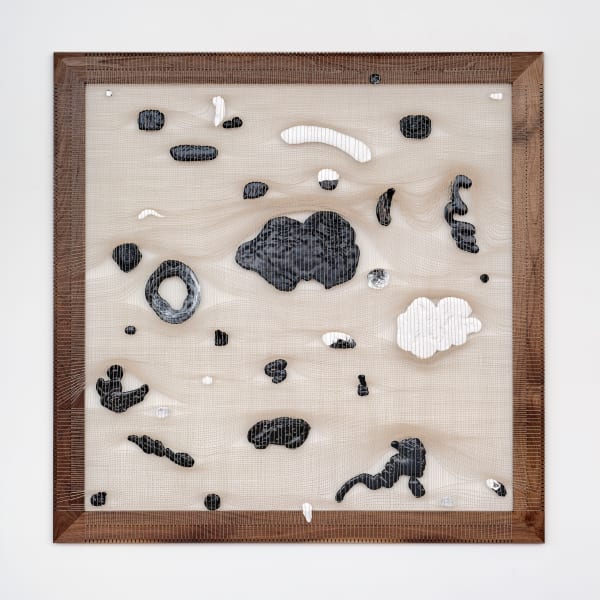
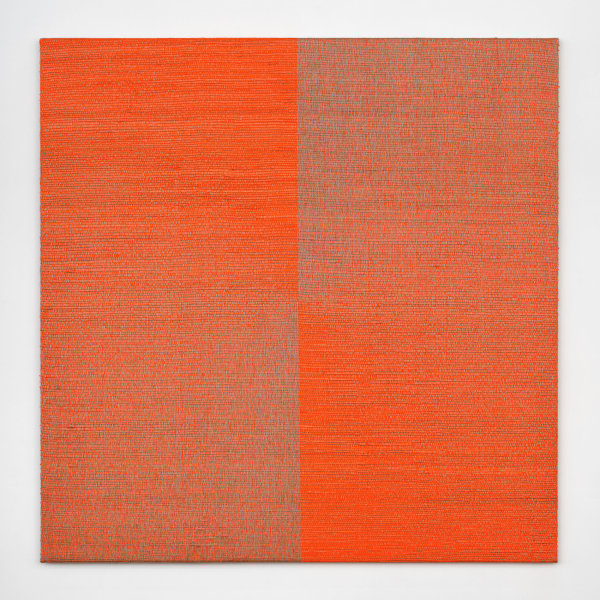
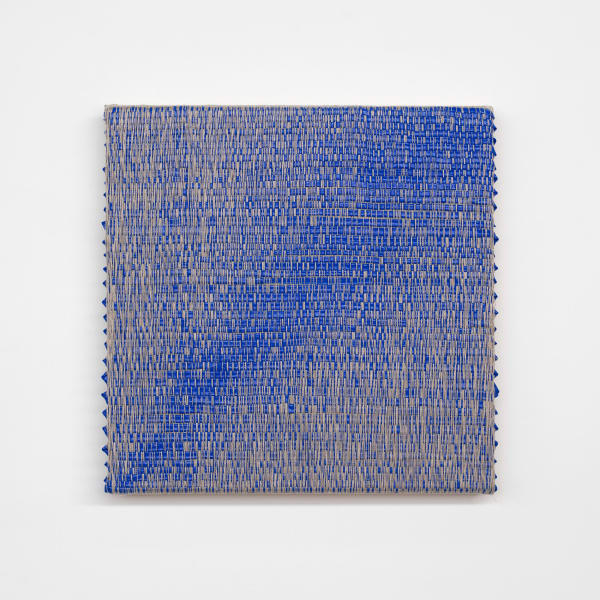
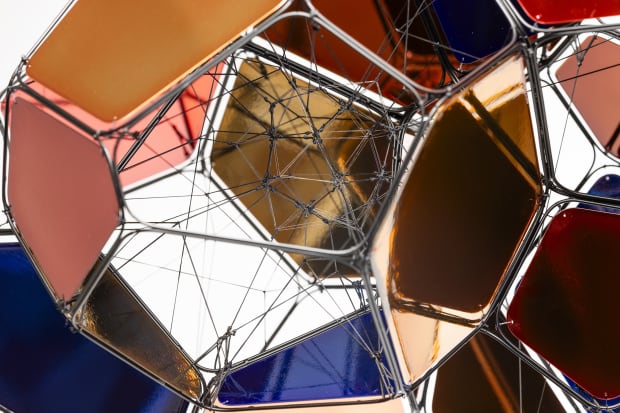
Informed by the worlds of art, architecture, natural sciences and engineering, Tomás Saraceno’s floating sculptures and interactive installations propose new, sustainable ways of inhabiting the environment. Embodying one of the core concepts in Saraceno's work and reimagined with a new reflective and multicolored material, Mu Leo b/M+M presents a model of life floating in space and suggests an architectural vision of the future. Suspended from the ceiling like a cloud, the complex geometric shape of the modules are derived from the artist's continued experimentation with a structure termed the "Weaire-Phelan Model," which describes an idealized mathematical geometry of foam. The work’s vibrant colors, however, tie it more firmly to the terrestrial realm; the ochres, golds, browns, blues and reds represent the life and dynamism of organic matter, and evoke the tones of land, sea, vegetation, and sky.



Thomas Scheibitz has developed his own conceptual language that bridges the realms of figuration and abstraction, at times dissolving them entirely. Drawing from classical painting and architecture, the contemporary urban landscape, and popular culture, Scheibitz deconstructs and recombines signs, images, shapes, and architectural fragments in ways that challenge traditional contexts and interpretations. While centrally concerned with principles of classification and systems of order, the artist’s paintings, sculptures and works on paper resist traditional categorization.
Thomas Scheibitz’s forthcoming solo exhibition Argos Eyes, opens at Tanya Bonakdar Gallery, New York, on February 27, 2025.


